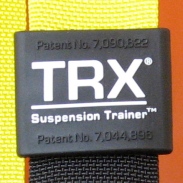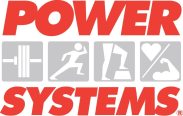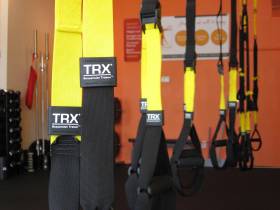These are our generic recommendations that are appropriate for almost every client we work with. Of course, there are exceptions to every rule. However, we do suggest you give serious consideration to all of these recommendations. If there is anything here you question or doubt, let’s discuss it. And of course, we encourage you to discuss your health options and issues with your doctor. Changes in diet and activity level can have risks for some people. However, not changing your diet and activity level can have serious repercussions, too. So, let’s get after it.
Nutrition
You will see no results from your fitness program if you don’t spend at least as much effort on your nutrition as you do your exercise. Fitness is 1 part good nutrition for every part exercise. They are inseparable. Challenge this and you will really be wasting your time. We can’t be more clear or direct than that. So . . .
These resources are a great place to start to put together a plan:
- Foodist: Using Real Food and Real Science to Lose Weight Without Dieting, by Darya Rose.
- www.summertomato.com
- What to Eat, by Marion Nestle (Marion Nestle is a professor in the Department of Nutrition, Food Studies, and Public Health and Professor of Sociology at New York University.)
- www.foodpolitics.com
Plan your meals several days at a time. In one sitting, plan all of your breakfasts, snacks, lunches and dinners and then go shopping for it all. Bring the food home, put it away and do as much prep as you have time for. By doing this, you’ll never not know what your next meal is and when you’ll be eating it. Begin to find your internal hunger signals and respect them. Eat when hungry and stop when you are full. The more prepared you are the more successful you will be.
Log your food. Research has shown that writing down everything you eat helps you keep more realistic tabs on what you really do eat. This really works and there really is research to prove it.
Foods to avoid:
- All soda (sugar-free and sugar-full are equally bad) – drink water
- Energy Drinks (too many sugars among other things) – drink water
- Energy Bars (too many sugars among other things) – eat fruit, nuts, cheese, yogurt
- Bread, pasta, tortillas, crackers, baked goods, pre packed foods, and sugary foods – these foods offer little nutrients and often deplete the body of vital minerals and vitamins
- Cereal, candy, cake, ice cream, fried food, commercial bacon and sausage
- Fast Food
- Frozen Convenience Foods
- Canned or Packaged Convenience Foods (beans, tomatoes and other vegetables might be OK – it depends. BPA is an issue. Fresh is best.)
- Alcohol: 1 glass of wine, 1 beer or 1 shot of alcohol is about 120 – 160 calories. Occasional enjoyment is OK but count the calories and include them in your journal. 3 drinks contain more calories than many meals and have zero nutritional value.
Ultimately, you will feel better and see more results if you focus on eating real food.
Protein, Fat and Carbohydrate: For every meal or snack, you should have a protein source, a fat source and a carbohydrate source. Don’t avoid fats. Instead, learn which fats are good for you, respect their caloric density and include the right kind in every meal/snack. Vegetables and fruits should be your primary source of carbohydrate.
Shop the perimeter of the grocery store. Produce, Seafood, Meat, Dairy are always on the perimeter of the store. This is where the good food is. However, watch out for the bakery and deli – danger lurks in those sections and they are on the perimeter, too.
Calorie Counting: Lastly, don’t be tempted to over-restrict your calories. If your body is undernourished, it will go into a “starvation” mode where it tries to retain everything you put into it rather than burn it as fuel.
Cardio
You should get 3 to 5 days of vigorous cardio every week. If you’re just starting out with a new exercise program and 60 minutes of continuous effort is out of the question, work your way from 20 to 30 minutes of slow steady state rhythmic exercise (bike, treadmill, elliptical, stair climber, rower, walking). Build up to 60 minutes as quickly as you can (1 to 2 weeks). Once you can do 60 minutes easily, increase the intensity and add interval training. Perform intervals 2 or 3 times per week. The remaining days can be long jogs, long easy bike rides, yoga, pilates, group exercise classes or any of the machines listed above.
Intervals call for a predetermined work to rest ratio that you’ll vary from one week to the next. “Work” refers to a maximum sustainable effort for the duration specified. “Rest” refers to a range between being completely motionless to walking slowly.
Here are some samples you can try after a good 10 – 15 minute dynamic warm-up:
- 1 minute work, 3 minutes rest
- 2 minutes work, 2 minutes rest
- 2 minutes work, 1 minute rest
- 3 minutes work, 2 minutes rest
- 3 minutes work, 1 minute rest
- 20 seconds work, 10 seconds rest
- 100 yard dash, 100 yard walk
- 400 meter sprint, 200 meter walk
Resistance Training
You should perform a total-body weight-training workout 2 times per week minimum – if you enjoy it, 3 times per week is good. No more than that is necessary or necessarily productive. Weights should be heavy and cover all muscle groups every time you work out.
Another effective resistance training method incorporates cardio elements with resistance training elements. This is known as cardio strength training or high intensity interval training. Done right, it can be some of the most effective (and maybe fun) work you’ll do in the gym. And depending on the intensity and focus, it may be done more often than 3 times per week if it’s fun for you. It’s not for beginners, however.
Rest, Flexibility & Soft Tissue Work
Rest without work is laziness. Work without rest is ridiculous. Equal parts work and rest will help you to become strong, toned, fit and healthy. Generally, we recommend one rest day between heavy lifts. Of course, it depends on each days focus and intensity levels but in short, working out heavy every day can lead to fatigue which is unproductive.
Sleep: get 7 to 8 hours every night. If you need to rely on an alarm clock to wake up every day, you’re not getting enough sleep. It’s that simple.
Stretching and massaging muscles and connective tissues helps improve and/or correct movement and prevents injuries. It also feels really good. Depending on how flexible you are or are not and what activity you have planned, you may want to change the timing of your stretching and foam rolling. Let’s discuss your individual needs before setting any hard and fast rules for how much and when. Certain people with specific skin conditions or other problems should consult a doctor before foam rolling.




